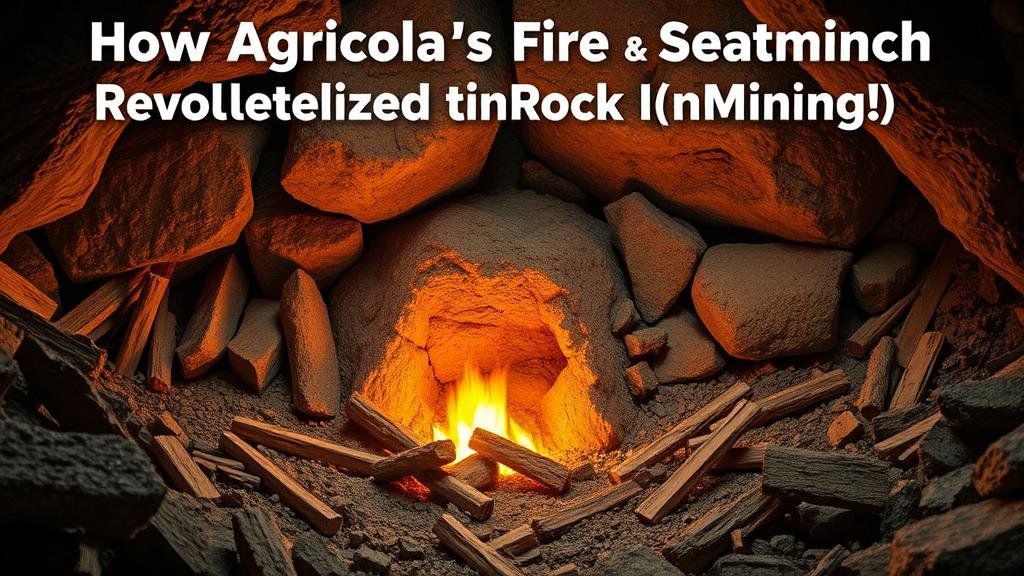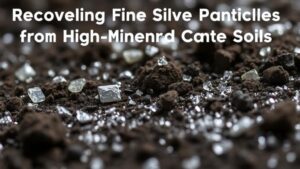How Agricola’s Fire-Setting Method Revolutionized Rock Breaking in Mining
How Agricola’s Fire-Setting Method Revolutionized Rock Breaking in Mining
The mining industry has seen numerous innovations over the centuries, but one historical method that profoundly transformed rock breaking techniques was Georgius Agricolas fire-setting method. Agricola, a 16th-century scholar from Saxony, documented this procedure in his seminal work, De re metallica. His insights into the use of thermal expansion and contraction not only advanced mining practices of his time but also laid the groundwork for modern techniques. This article delves into the fire-setting method, its mechanics, and its lasting impact on mining operations.
The Principles of Fire-Setting
Fire-setting involves the application of intense heat to rock faces, causing the rocks to fracture through thermal stress. Agricola advocated that by heating the rock and then rapidly cooling it–often with water–miners could exploit the rocks physical properties to simplify the extraction of valuable ores.
The process can be broken down into the following steps:
- The rock face is heated using large fires made from wood or coal.
- Once the rock reaches a high temperature, water is poured over it to induce rapid cooling.
- The thermal shock leads to the creation of cracks and fissures in the rock, making it easier to remove.
Historical Context and Applications
During Agricola’s time, mining predominantly relied on manual efforts to break rock, which was labor-intensive and time-consuming. Fire-setting offered a more efficient alternative, significantly reducing the need for extensive physical labor and tools. For example, in the silver mines of Joachimsthal, this method was extensively employed to extract silver-rich ores. rapid breakage facilitated by fire-setting permitted miners to yield greater quantities of ore with less effort.
Impact on Mining Techniques
By effectively utilizing the fire-setting process, miners could invigorate extraction rates, thus significantly contributing to local economies. The ability to break rock more efficiently not only saved time but also allowed for larger-scale mining operations. Particularly in regions abundant with mineral resources, such as the Erzgebirge (Ore Mountains) in present-day Germany, the method proved crucial in meeting the demands of a growing market.
Also, Agricola’s documentation of the method educated future generations of miners. His works influenced mining practices in Europe, ensuring that fire-setting became a standard procedure across various mining operations. By the mid-18th century, it was widely recognized that fire-setting could be used alongside other techniques, such as blasting with gunpowder, revolutionizing the entire mining industry.
Modern Relevance and Comparisons
Although modern mining has evolved dramatically with the introduction of advanced blasting technologies and machinery, the fundamental principles behind fire-setting remain pertinent. Today’s rock-breaking techniques, such as hydraulic fracturing and controlled blasting, still utilize concepts of thermal stress to achieve desired outcomes.
For example, hydraulic fracturing applies pressure to induce fractures in rock, akin to how fire-setting exploited thermal stresses. underlying goal of both methods is to enhance rock fragmentation, thereby increasing operational efficiency–a principle that traces back to Agricolas innovative approach.
Conclusion and Actionable Takeaways
Agricola’s fire-setting method represents a pivotal advancement in the history of mining. By harnessing the physical properties of heat and thermal expansion, he introduced a systematic approach that drastically improved rock breaking capabilities. While technology has evolved, the essential ideas of Agricola continue to inform modern methods of extraction.
For those involved in the mining industry today, the lessons learned from Agricola’s use of fire-setting provide valuable insights into the importance of innovation and adaptation in overcoming geological challenges. Here are actionable takeaways:
- Explore historical mining techniques to uncover time-tested practices that could be re-adapted for modern use.
- Innovate by considering the uses of thermal variabilities in mining operations, potentially integrating older methods with contemporary technologies.
- Prioritize safety and environmental impacts when implementing any rock-breaking methods, ensuring compliance with current regulations and best practices.
Understanding and appreciating the revolutionary contributions of figures like Agricola not only enriches the historical narrative of mining but also inspires continued progress in the field.



